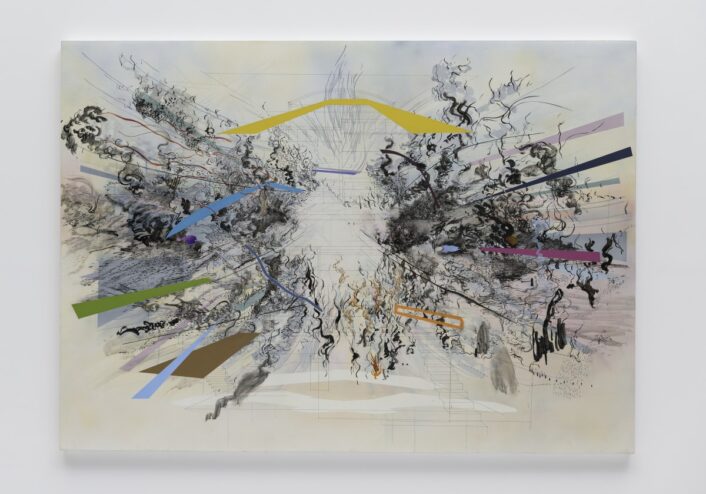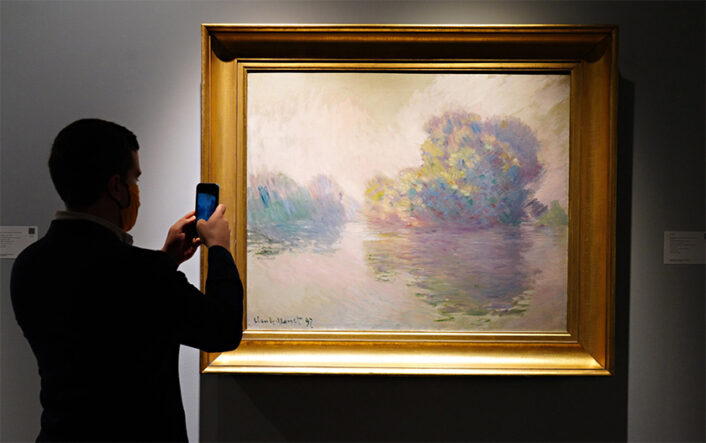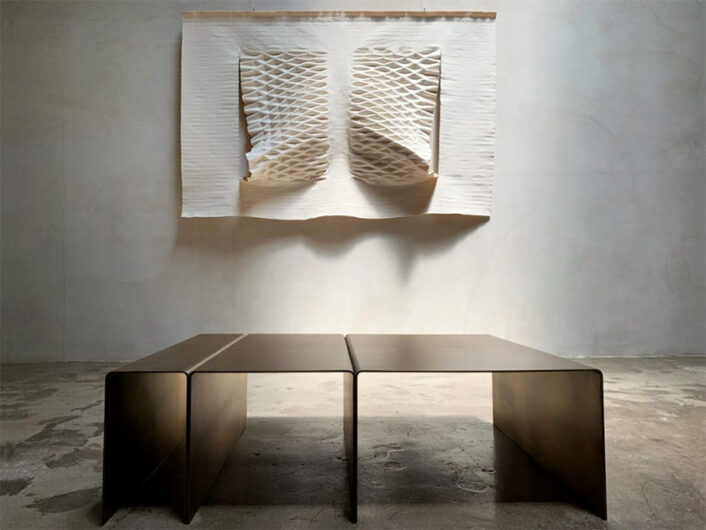Negative flare space consists of colourful panes of hand-blown glass from which circular cutouts have been removed. A large reflective circle has been added to one of the front-most panes, while a smaller mirror circle can be discerned within the layers. The various panes of glass lean on one another and create a variety of hues where they overlap, allowing other tones to shine through the cutouts.
Fine Art
PREVIEW: Art Basel OVR: Pioneers
Art Basel ‘OVR: Pioneers’ is live March 24/25–27, 2021. Featuring trailblazing modern and contemporary artists, each project is carefully curated, satisfying our hunger for top tier content and opportunities. Please see below from our preview selections and recommended acquisitions. Do let us know if you have questions or if we may assist.
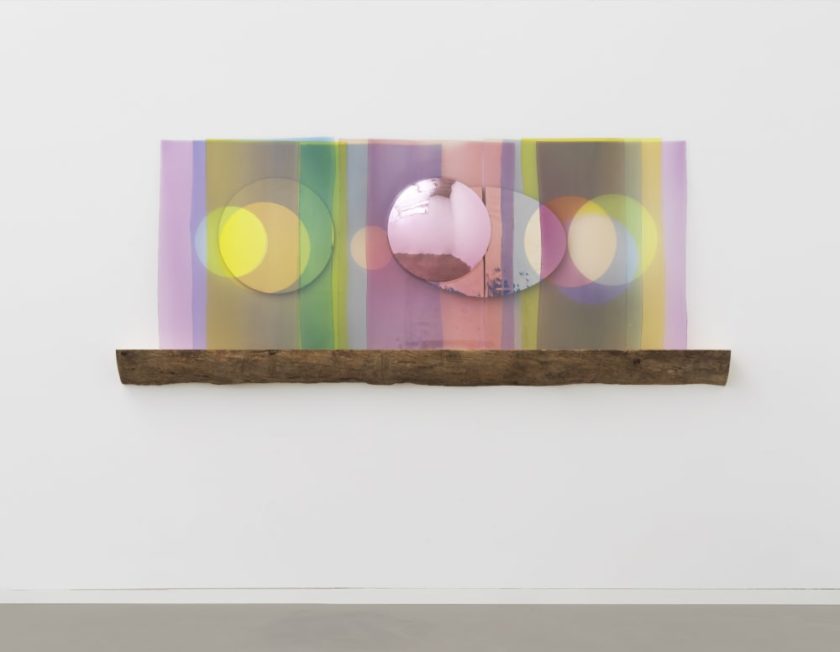
Olafur Eliasson (b. 1967)
Negative flare space, 2021
Colored glass (yellow, beige, light blue, light purple, pink, silver, driftwood)
43.3″ X 104.3″ X 7.1″
Courtesy: Tanya Bonakdar
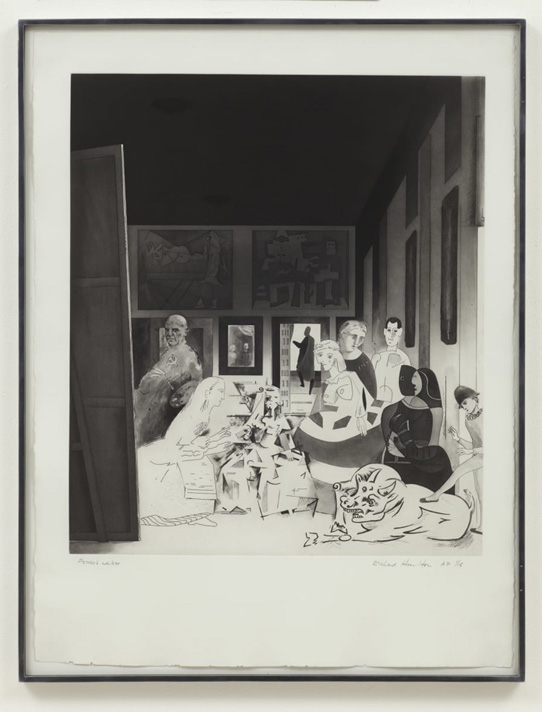
Richard Hamilton (1922-2011), Picassos Meninas, 1973
Hard, soft-ground and stipple etching, open bite and lift-ground aquatint, engraving, drypoint and burnishing on Rives paper, Ed. 90
29.7″ X 22.3″
Courtesy: Cristea Roberts
In 1973 Hamilton was invited by Propylaen Verlag to contribute a print to a major portfolio being published to celebrate Picasso’s 90th birthday. He accepted the invitation on the condition that he was allowed to work at the atelier where Picasso had famously etched in his later years alongside the master printer Aldo Crommelynck. Picasso and Hamilton shared a mutual admiration for Velasquez’s Las Meniñas. In Hamilton’s version, the seventeenth century Spanish painter, who gazes intently at his domineering canvas is replaced by Picasso, the Jacob’s Order gone, the hammer and a sickle, symbolic of Picasso’s political conviction, present instead. The Infanta is depicted in Picasso’s analytical Cubist style, and the rest of the assembled cast is shown in a variety of styles from throughout Picasso’s career. Two of Picasso’s own paintings hang high on the back wall, above a mirror, in which Hamilton stands with his wife, the artist Rita Donagh. The print itself is a tour de force of technical skill. In a confined pictorial space, Hamilton managed to utilise every etching technique Picasso had used during his career, including a method Picasso had pioneered himself – a mark drawn onto an aquatint ground using a greasy crayon. The resulting print is one of the finest examples of classical intaglio printing of the 20th century.
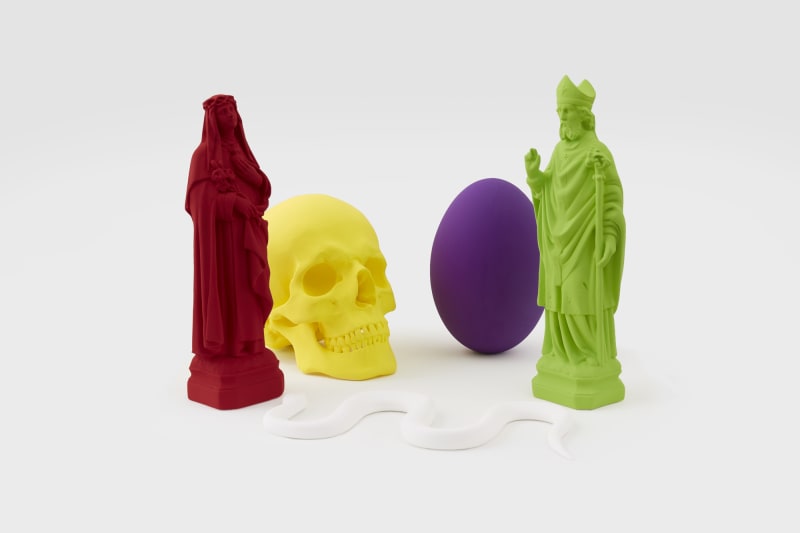
Katharina Fritsch (b. 1956), 6. Stilleben, 2011
Five hand-finished casts: Snake, Skull, Egg, St. Nicholas, St. Katharina
High speed resin cast, plaster, color
Edition of 6
13.8″ X 18.9″ X 19.7″
Courtesy: Matthew Marks
Katharina Fritsch’s sculpture 6. Stilleben, 2011 features a snake, skull, egg, and figurines of St. Nicolas and St. Katharina. A larger than life size version of this work was first exhibited at the Venice Biennale in 2011. Taking recognizable objects and rendering them uncanny has been a central motivation in Fritsch’s work: “I think everything can be a sculpture for me. From the beginning, I wanted to create a kind of middle world that took you behind the object again by yourself, a world that really surprises people like they haven’t seen the object before.”
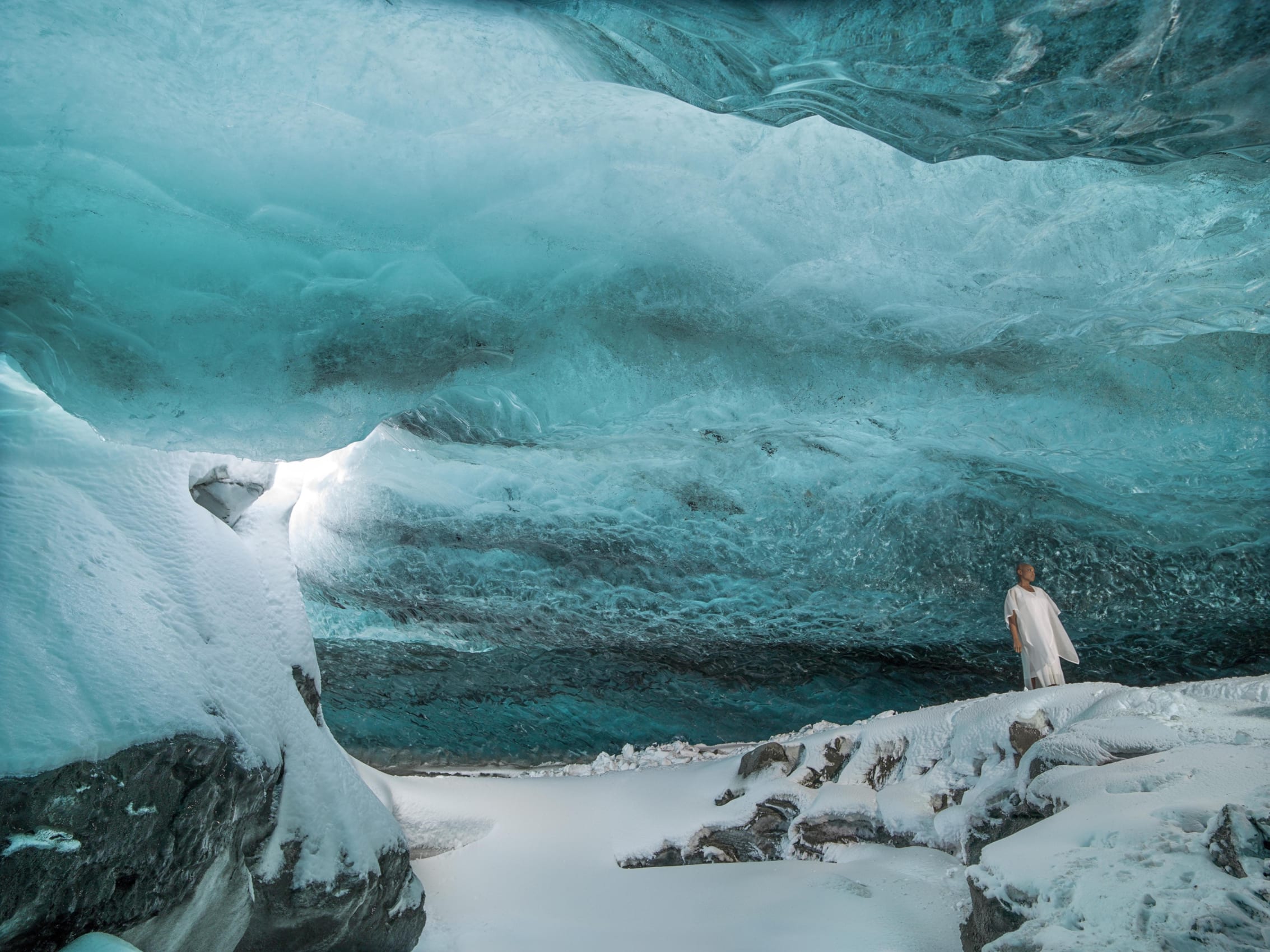
Isaac Julien (b. 1960)
Under Opaline Blue (Stones Against Diamonds), 2015
Kodak Endura Premier photographic print, Edition of 6 + 1 AP
70.9″ X 94.5″
Courtesy: Nara Roesler
Stones Against Diamonds was inspired by a letter written by Lina Bo Bardi, where Bo Bardi commends the beauty of semi-precious stones over precious ones, such as diamonds. The production was staged and shot over a period of five days in the remote Vatnajökull region in South East Iceland Austurland, inside glacial caves through which actress Vanessa Myrie – a spirit guide – takes the viewer from one landscape to another. Throughout the film, Julien referenced signature elements of Bo Bardi’s body of work, including reproductions of the architect’s iconic glass and concrete easels, and a handmade spiral staircase. Ultimately, Stones Against Diamonds explores how some of the most beautiful elements of nature, can also be the least precious in the conventional – and socially constructed – sense of the words.
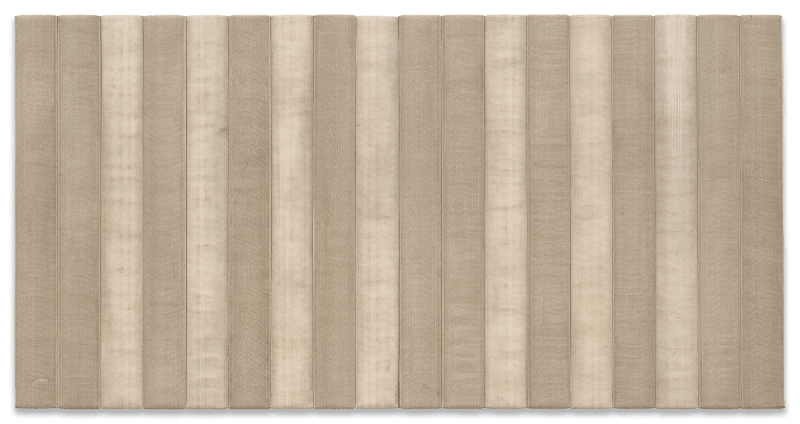
Theaster Gates
American Tapestry, 2019
Decommissioned fire hose and wood
60″ X 117″ X 4″
Courtesy: Gagosian
The intent of the Civil Tapestries is seduction, not guilt. After the seduction—you’re fascinated by something that looks like a cousin to a preexisting genre in art history—then the story grabs. . . . Fire hoses that were used to do great things could actually be some of the most demeaning and horrific weapons used in American history.
— Theaster Gates
Through an art practice that underscores notions of cultural restitution and social empowerment, Theaster Gates (b. 1973) proposes the work of art as a communicating vessel, a sacred reliquary of recollected histories, shared experience, and critical vitality. Traversing a range of mediums and methodologies, from painting, sculpture, and performance to archival reclamation, Gates explores concepts of value and economy, as well as spiritual and material exchange in charged social and political contexts. American Tapestry (2019) is one work in the ongoing Civil Tapestries series, begun in 2011, whereby he salvages decommissioned municipal fire hoses and assembles them into abstract compositions in dialogue with not only art history but a deeper and more grave social history. For Gates, the hose is a semantic reminder of the unresolved struggles of Black Americans, its seemingly anodyne form belying its violent role in documented events such as the 1963 student march in Birmingham, Alabama, where law enforcers turned high-pressure hoses on peaceful Black protesters. In American Tapestry, he arranges the flattened hoses, abstracted from their utilitarian purpose, into alternating stripes of tonal white on white. Like life itself, the discolored rips and stains of the fabrics mark the passage and ravages of time.
